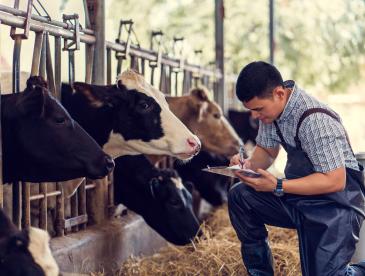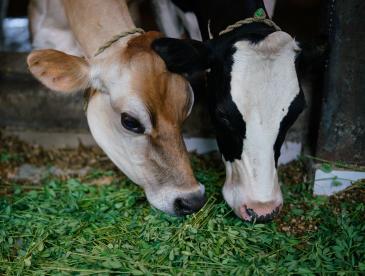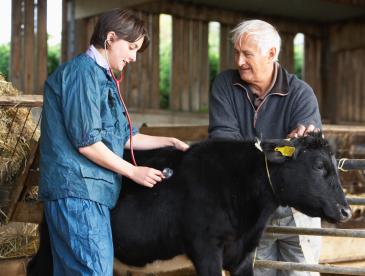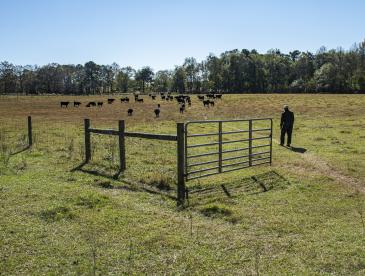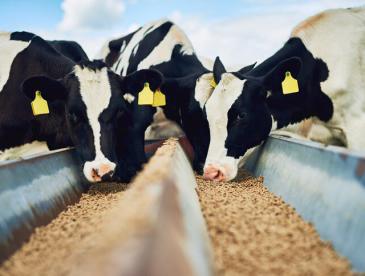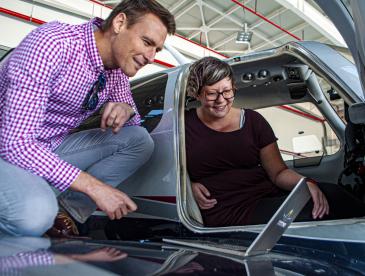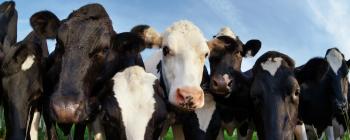
Helping livestock farmers cut methane emissions
The problem: Globally, agriculture accounts for about 40% of human-caused emissions of methane, a potent greenhouse gas. Cutting methane is one of the fastest ways to slow global warming, and the majority of agricultural methane emissions come from livestock farming.
What we’re doing about it: Livestock farming supports livelihoods and provides vital nutrition to people around the world. We work with top food companies, farmer organizations and policymakers to support producers in cutting methane while protecting jobs and food supplies. The best solutions are regional and include better manure management, improved productivity — and fewer cow burps.
Our work speeding the transition to climate-smart livestock farming
- Initiative
How we’re partnering with global dairy companies to cut methane emissions
- Article
In India, an environmental solution that’s good for farmers, cows and climate
- Initiative
Why healthier animals mean healthier people and a healthier planet
- Initiative
A farm bill that helps farmers, ranchers and the climate
- Blog post
Danone commits to cutting dairy methane in partnership with farmers and EDF
- Overview
Our cutting-edge science is guiding global action to reduce methane emissions
Opportunities to lower livestock methane emissions
- Healthy, productive animals: Improvements in cattle health, feed and breeding can optimize how much milk cattle produce and how quickly they gain weight. This improves farmers’ incomes and nutrition, particularly in lower-income countries.
- Better manure management: Changing how manure is stored and treated can reduce the amount of methane generated on farms and provide valuable energy and fertilizer for farms.
- Fewer cow burps: Enteric methane emissions, or cow burps, comprise the majority of beef and dairy greenhouse gas emissions. With additional research and development investments and policy support, we can ensure farmers and ranchers have access to a variety of solutions that reduce how much methane livestock burp as they digest their food.
Updates
Read the latest articles, blogs and press releases on livestock methane.
-
India’s dairy industry: A market opportunity for climate adaptation to protect people and livelihoods
Blog post, -
Climate adaptation can’t wait: Making resilience visible, valuable and investable
Blog post, -
Food for thought: How EDF is accelerating climate action in food systems post-COP30
Blog post, -
Three takeaways from global action on agriculture and climate
Blog post, -
From feed formulation to fermentation: Can dairy cow nutrition models predict enteric methane emissions?
Blog post, -
In India, an environmental solution that’s good for farmers, cows and climate
Article,
Livestock methane resources
Dig deeper into our work with these resources for researchers, policymakers, journalists and communities.
- Blog post
Why lowering livestock methane emissions helps farmers and the climate
- Article
New report provides eight models for financing sustainable dairy
- Report
Ambitious climate mitigation pathways for U.S. agriculture and forestry: vision for 2030 (PDF)
- Report
Tackling enteric methane: designing effective solutions informed by U.S. dairy and beef producers' perspectives
- Explainer
Demystifying the enteric solutions market for food and agriculture companies
- Report
Carbon offset credits for livestock methane reductions are promising but need better science and technology
Our livestock methane experts
We bring wide-ranging perspectives and skills to our work on livestock methane. Meet some of the people who make it happen.
MEDIA CONTACT
Hilary Kirwan
(202) 572-3277 (office)











